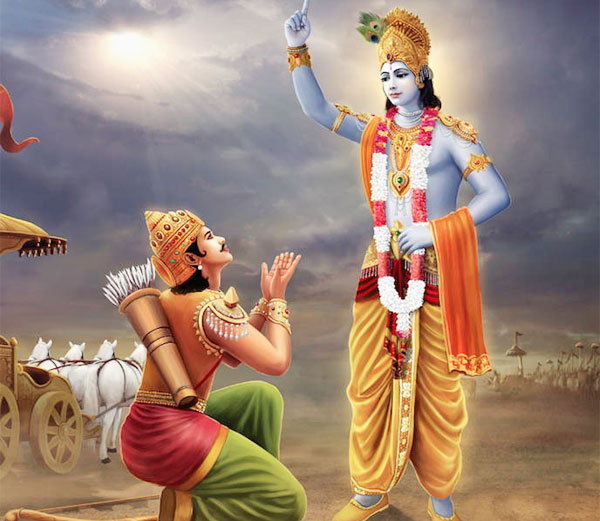Dear Sirs,
1.”Ahimsa Paramo Dharma” is Sanskrit phrase that was popularized by Mahatma Gandhi and is often repeated by many Indian leaders to demonstrate the universality of Ahimsa. Loosely translated,”,Ahimsa Paramo Dharma” means that non-violence is the topmost duty to the extent that it supersedes all other duties. For someone who holds this true, it means that there is no selective application of ahimsa…it must be applied in every case and in all matters. This universal sense leads to an unconditional and unilateral abandonment of violent resistance, under any and all circumstances (as in the philosophy of Buddhists and Jains, and teaching by M K Gandhi).
. 2. Gandhi made ahimsa (non-violence) the cornerstone of his philosophy and practice and spoke of it as constituting the essence of Hinduism. We Hindus, always miss the second sentence, of the Shlok that is धर्महिंसा तदैव च: l( धर्म की रक्षा के लिए हिंसा करना उस से भी श्रेष्ठ है.)
3. While Gandhi championed the ethic of ahimsa, there are ancient traditions within Hinduism which sanction violence under certain circumstances and that ahimsa and himsa (violence) have coexisted in Hinduism for centuries. Therefore, Gandhi’s representation of Hinduism must be questioned, and are being questioned.
4. Vedic society in ancient India did not scrupulously adhere to ahimsa as its highest value. Two of the most popular epics in the Hindu tradition, the Ramayana and the Mahabharata culminate in lengthy and violent battles. The Mahabharata war is referred to, in the Bhagavad-Gita, as a dharma yuddha. A dharma yuddha is a war fought in defence of justice and righteousness and for the security and well being of Nation. The final characteristic of a dharma yuddha is, that violence is justified as a last resort and only after peaceful methods of conflict resolution are exhausted. It is clear, therefore, that there are influential traditions within Hinduism which justify the use of violence under certain circumstances.
5.There are many stories of Gods killing demons, king and his army killing the opponent for upholding the righteousness or “protection of dharma” – are all deemed as heroes who attain heaven post death attained while fighting for the dharma.
6. Killing is always mentioned as a means of protecting the dharma and is not considered a sin. Any other forms of killing for personal or egoistic issues are always considered evil, which are always punished.
7. “Ahimsa paramo dharma” is not mentioned in the Bhagavad Gita as is frequently cited. The word Ahimsa is mentioned four times in the Gita. The Gita begins with Arjuna telling Krishna that he is despondent and unwilling to fight the war. In this discussion, Lord Krishna repeatedly tells Arjuna get up and fight. One such statement is: “If, however, you do not fight this religious war, then you will certainly incur sins for neglecting your duties and thus lose your reputation as a fighter.”
8. Had the Lord Krishna, said ‘Ahimsa paramo dharma’ than the war would have ended before it began because he would have effectively been stating that there is no need to fight because the greater dharma is non-violence.
9.”Ahimsa Paramo Dharma” cannot be strictly practiced by householders. If someone enters the house and molests a lady, a householder cannot keep quiet.( But M K Gandhi taught us differently. Also in one of his writing he advised women not to resist the rapist and suffer the rape couragously!!)) Similarly, in a war, a soldier cannot put down his weapons.( Our judiciary, dictating us how to fight and which weapons to be used against terrorists!!). In either case, mentioned above,practicing ahimsa would be adharma, not dharma. Similarly, a king must protect his subjects even if it requires violence to punish criminals or going to war with neighbouring nation. Lord Krishna. clearly states that ahimsa, while highly regarded, is not the highest dharma for everyone and certainly not for Arjuna on the battlefield of Kurukshetra.
10. The question also arises why Hindu Gods have all types of weapons in their hands?
11.In the early days of the mankind, men had weapons to take the power over the animals they were hunting. So weapons gave them Power. To Protect the Powerless they have to be “Powered”.
When Hindus, wanted their God, and Goddess, to be more powerful than them, and protect them, they equipped God, and Goddess with the weapons.
12. All Hindu deities are themselves symbols of the abstract Absolute. Indian Deities have weapons (or ‘Shastra’) in their hand. The Gods came into existence, with weapons, with the purpose of destroying the demons, who tormented the innocents, and to fight the evil..
13. This also leads to the concept of “Shastra Puja”, by Hindus. Performing puja of the weapons, (Shastra), which are used to protect us from evil people. This is normally done on Dushera, because on that day Pandavas recovered their Shastra, (which were kept hidden) from a tree, for fighting their enemy. This concept has been generally, forgotten by Hindus. Now, ( I suggest)all Hindus should adhere to “Shastra Puja”,once in a quarter, to get feel of the “Shastra” and psychologically, restore some “fighting spirit”, instead of chanting “ Ahimsa Parmo Dharam”.This will also help us forgetting the “ teaching” of M K Gandhi.
14 Next time if someone tells you “अहिंसा परमो धर्मः,( अहिंसा मनुष्य का परम धर्म है ), your immediate answer must be ,धर्महिंसा तदैव च: l (धर्म की रक्षा के लिए हिंसा करना उस से भी श्रेष्ठ है.)
16 Let’s teach our children and grand children about” धर्महिंसा तदैव च: l”
Jai Hoi.
(By — Major General (Dr) V S Karnik, PhD (Management)
(HAPPY DASHERA, IN ADVANCE. HOPE WE ALL DO SHASTRA PUJA on 30 Sep2017)
(9 Sep 2017)
————————————————————xxx—————
Bibliography :–( a) The Co-Existence of Violence and Non-Violence in Hinduism. By: Anantanand Rambachan
(b)”Ahimsa Paramo Dharma” By Krishna Maheshwari
(c)Bhagvat Gita
——————————————————————–xxx———————————–


